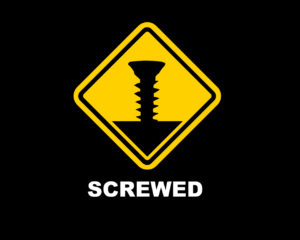Flooding sucks, big time. I know – I have experienced a flood first hand. The flood water comes in and destroys everything. It gets into your walls and soaks your drywall and insulation. It all has to be torn out and replaced. Wood flooring is destroyed, as is furniture.
Homeowner’s Insurance
But you are insured – you have homeowner’s insurance. Right? Wrong! Homeowner’s insurance does not cover damage from flooding. Rule of thumb: If the damage is caused by water falling from the sky, then homeowner’s insurance covers it. If the damage is caused by water coming up from the ground, homeowner’s insurance does not cover it. But, you say, the cause of the water coming up from below is the rain falling from above. Therefore, I’m covered, right? Unfortunately, you are not covered.
Flood Insurance
To be insured for flood damage, you need flood insurance, which is only available through the Federal Government. It is called the National Flood Insurance Program through FEMA. If you live in a flood zone, or a flood-prone area, guess what? You can’t get flood insurance, or it will be prohibitively expensive. In short, you are:

Risk Avoidance
Let’s use the Texas flooding as a teachable moment. Flooding is a risk. (It’s also a hazard, but for the purposes of my blog, it’s a risk.) The best way to address a risk such as flooding is to avoid it altogether. For your housing, this means that you don’t live in a low-lying area that is prone to flooding. If you do live in such an area, then live up – live on a higher floor of a high-rise, or raise your building so that your ground floor is higher. If you live in Houston, it is difficult if not impossible to live on high ground. If you live in California, as I do, then don’t live at sea level. There are spectacular homes available near the beach or on the harbor, but if you want to avoid the chance of flooding, then don’t buy one. If you live on higher ground, then your chances of enduring a flood will be much less.
Risk Transfer
Insurance is Risk Transfer. Transfer means a third party (the insurer) undertakes the flooding risk. FEMA provides the only available outlet for flood risk transfer, and it is prohibitive, or expensive, or both. Also: Insurance is not the same as Indemnity. Indemnity means the insurer will reimburse the insured for 100% of the loss, or the insurer will replace the lost property with something that is identical. With insurance, there is usually a deductible, and then there is either a dollar limit or a percentage limit after the deductible.
Self Insurance
Instead of paying premiums for flood insurance, take the premium money and put it into an account and invest it on your own. It will grow over time and hopefully the flood hits later rather than sooner. Go and get an actual flood insurance quote, and use that price quote as your goal. Your price quote is based on the insurer’s actuarial tables. If you actually do this, you could use the money for any natural disaster that might happen, not just a flood. Pray that you are fortunate and no disaster befalls, and then you will have built up a nice nest egg. Insurance premiums, once paid, are gone. How many people self-insure? Probably not that many, but it’s a good strategy if you have the discipline to keep putting in money every year and not withdraw it for any reason other than to pay for disaster recovery.
Risk Sharing
Most insurance policies of any type are a form of risk sharing. Most medical insurance policies involve a deductible and then cost-splitting. Same with property insurance. Insurers understandably want policy holders to limit claims. Therefore, they make sure the policy holder comes out-of-pocket, even to a small extent.
IMO
The main purpose of this blog is to show that Avoidance is the best way to handle flood risk. Just don’t live in a flood-prone house. This may be hard or even impossible to do, but if you are moving into a flood-prone area, then pay a premium and live on higher ground. If you are moving to Houston, find a place that was not damaged by the Harvey flood. Flooding is not the only natural disaster. California is prone to forest or brush fires. Don’t buy a house in an area you think might be in a fire zone. Avoid the risk entirely.
